What Is Ergonomics?
Ergonomics is the study and design of items that improve users' comfort and reduce their stress levels. It helps to boost productivity. Workplaces, products, and systems are designed and arranged by the scientific field of ergonomics to make sure that their users are comfortable and can adjust to them. Particularly in North America, the terms "human factors" and ergonomics are frequently used interchangeably. Ergonomics' main objective is to design spaces that are more efficient, safe, and comfortable while taking into account the physical and mental needs and limitations of people.
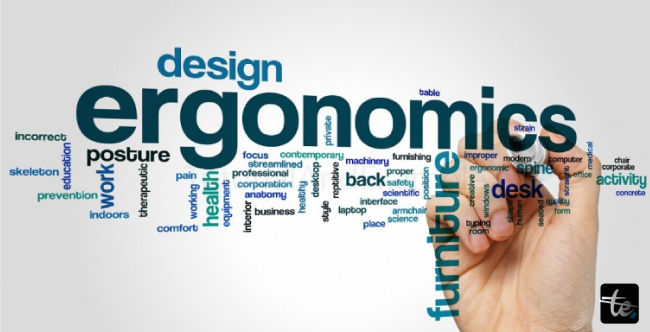
Key aspects of ergonomics
Changing with Technology: Ergonomics must change with technology to make sure that new instruments and apparatus satisfy the physical and mental requirements of users.
Application Outside of the Workplace: Although ergonomics is most commonly linked with the workplace, it is also used in the design of consumer goods, automobiles, public transportation, and residential spaces. This is especially true when taking into account the varied and evolving demands of an aging and expanding population.
Relevance to Economics and Safety: Implementing ergonomic solutions is imperative from an economic and personal wellbeing standpoint. The financial expenses of work-related diseases and injuries caused by shoddy ergonomic designs can be high.
Recognizing Human Needs and Limitations: The foundation of ergonomics is a knowledge of human capacities, including physical attributes like strength and size, cognitive functions, sensory perception (including vision and hearing), and psychological aspects like attitudes and behaviors.
Workplace Design: An important aspect of workplace design is ergonomics. It facilitates the proper arrangement and customization of components such as keyboards, monitors, chairs, desks, and lighting to meet the demands of the user. It seeks to reduce discomfort and injury risk while increasing productivity.
Importance of Ergonomics
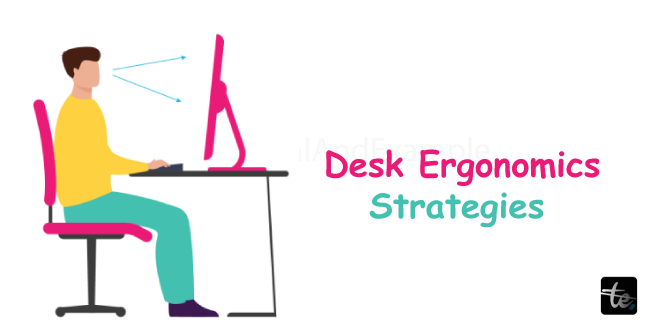
Health and Safety:
Proper ergonomic design is essential to avoid musculoskeletal problems and repetitive strain injuries, which can develop over time and result in long-term impairment.
Comfort:
Because ergonomically built workspaces and products take into account the physical needs and movements of their users, they are more comfortable. This lessens discomfort and strain.
Productivity and Efficiency:
By creating a comfortable and natural-moving workstation, employees may work more productively. Productivity is frequently higher in ergonomically improved workspaces.
Economic Benefits:
Investing in ergonomic furniture and equipment can reduce the frequency of work-related injuries and associated costs, such as medical bills and lost productivity. Over time, this can save money.
Inclusivity and Diversity:
Ergonomics must be used to manage a diverse workforce made up of individuals of varying ages, sizes, forms, and physical abilities. This is especially important as the workforce ages and for persons with impairments.
Flexibility to Change:
Ergonomics ensures that workstations adjust to changes in work habits and technology by encouraging the human-centered integration of new technologies.
Working of Ergonomics
1) Evaluation and Analysis: Examining the current workspace, equipment, duties, and users is the first stage in ergonomic design. Analyzing bodily postures, repetitive motions, ambient elements like noise and illumination, and the cognitive demands of tasks are all part of this process.
2) Data Collection: Information about the potential and constraints of humans is obtained from a variety of sources. This comprises anthropometric information (body dimensions, for example), biomechanical information (strength, for example), psychological information (attention, decision-making, etc.), and social elements.
3) User-Centered Design: Ergonomics places a strong emphasis on creating designs with the end user in mind. This is taking into account the preferences, needs, and physical and psychological traits of the user when creating a product or setting.
4) Implementation: When an ergonomic design has been finalized, it is put into practice. This could entail moving workstations around, getting ergonomic chairs, or altering office procedures. In terms of product design, this refers to producing the item in accordance with ergonomic guidelines.
5) Training and Education: In order to optimize the benefits of ergonomic products and workspaces, employees also need to get training on appropriate postures, movements, and equipment usage.
6) Adaptability to Change: Ergonomics ensures that designs and surroundings are updated and altered continuously to meet changes in tasks, people, and technologies. This minimizes the risk of injuries and maintains optimal interaction.
Types Of Ergonomics
Ergonomics comes in a variety of forms, with each discipline concentrating on particular facets of how people interact with various settings. The following are some well-known forms of ergonomics:
1. Ergonomics for Particular Purposes
Within the field of physical ergonomics, this subcategory concentrates on the design specifications for persons with particular needs, including children or those with disabilities. It seeks to establish conditions in which these people can function successfully and freely. For example, it entails planning areas that are wheelchair-accessible, developing learning settings that address the physical needs of kids, or designing items that are useable by those with limited mobility.
2. Ergonomics in Organizations
Organizational ergonomics focuses on optimizing sociotechnical systems, such as organizational structures, procedures, and policies. It examines how workplace structure impacts employee behavior and can result in gains in productivity, quality, and wellbeing. This could entail developing shifts that maximize performance and sleep or developing workgroup structures that maximize morale and collaboration.
3. Ergonomics in Physical Form
The physical interactions that occur between people and their surroundings are the focus of physical ergonomics. It is centered on human anatomy and employs anthropometric, physiological, and biomechanical traits to create places and products that are in harmony with human physical capabilities. This can involve making sure that equipment needs less force, providing chairs that encourage healthy posture, and placing work supplies easily accessible to minimize strain. It places a strong emphasis on preserving the natural curve of the back, making sure the neck and spine are aligned properly, and encouraging postures that lower the risk of musculoskeletal problems.
4. Cognitive Ergonomics
The study of cognitive ergonomics focuses on the mental processes—perception, memory, reasoning, and motor response—that are engaged in the interaction. It examines how to make settings and systems more efficient in order to lessen cognitive overload and promote mental processes. For instance, it could entail developing settings that lessen tension and encourage focus or building an easy-to-use user interface that lowers the cognitive work required to finish a task.
5. Environmental Ergonomics
This area of ergonomics examines how people interact with their physical surroundings, including noise, illumination, temperature, pressure, and climate. It seeks to comprehend the ways in which these elements impact human performance and welfare and then applies this comprehension to the design of environments that maximize them. For instance, it could entail selecting lighting settings that reduce eye strain or making sure a workspace has adequate ventilation and a comfortable temperature.
6. Macro-ergonomics
On the other hand, macro-ergonomics takes a more comprehensive approach, taking into account how technical and human elements are integrated inside an organization. It is focused on the interactions between these systems and their users, with a concentration on bigger systems. It could entail creating software solutions that enhance organizational workflow.
7. Micro- Ergonomics
In order to make sure that tools, interfaces, and other individual components of a system are safe, dependable, comfortable, and functional, micro-ergonomics focuses on their design. It focuses on the specifics that influence a person's first-hand engagement with a product and addresses the small-scale components of ergonomics.
8. Corrective Ergonomics
The goal of corrective ergonomics is to find areas where ergonomics can be improved by evaluating current settings and procedures. This is frequently a reactive strategy in which problems are found and fixed after they are acknowledged. For example, corrective ergonomics would entail evaluating the workplace and making the required modifications if employees were feeling pain or injuries.
9. Preventive Ergonomics
Preventive ergonomics is proactive as opposed to corrective ergonomics. Its main objective is to spot possible ergonomic difficulties early on and fix them. This could entail conducting routine workstation evaluations, educating staff members on best practices, and making sure that workspaces are ergonomically built.
Examples
Use of Ergonomics in Computers
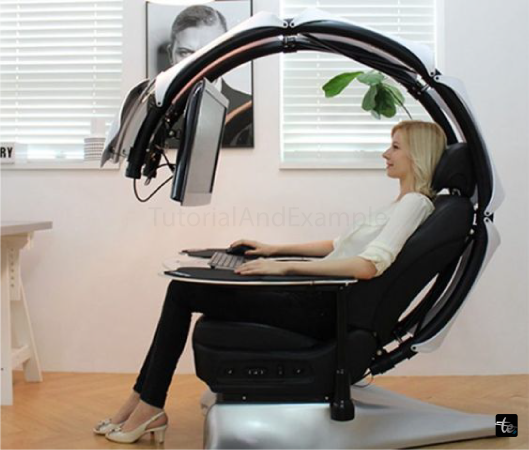
1. Mouse and Keyboard
The positioning and design of keyboards and mice can greatly impact user comfort and productivity when using computers. Ergonomic keyboards and mice are less likely to strain the wrists, hands, and fingers. To encourage neutral hand positions and lower the danger of repetitive strain injuries, they frequently have adjustable angles, padded wrist rests, and simple button placement.
2. Positioning of Monitor
Proper monitor positioning is essential to prevent the eye strain and neck aches that come with prolonged computer use. To minimize glare, monitors should be placed at eye level, about 20 inches away from the eyes, and slightly angled rearward. Users can also alter the height and angle by using wall mounts or adjustable monitor stands, which promote ideal viewing angles and reduce neck and back pain.
3. Workplace Arrangement
An ergonomic workstation arrangement is essential to encourage a comfortable and productive computer usage environment. Desk space should be sufficient in a workspace to hold all necessary tools and paperwork, reducing the need for reaching and pointless motions. Additionally, cables need to be arranged and fastened to avoid trip hazards and encourage effective mobility in the work area.
4. Prevention of Eye Strain
Prolonged computer use frequently causes eye strain and pain. Using appropriate lighting—such as natural light or adjustable work lighting—can lessen eye strain by reducing glare and shadows. Other strategies to reduce the symptoms of eye strain include taking regular pauses, focusing on far-off objects, and altering the text size and screen brightness. Furthermore, reducing eye strain from prolonged computer use can be achieved by using ergonomic eyewear, such as computer glasses.
Ergonomics in Sports
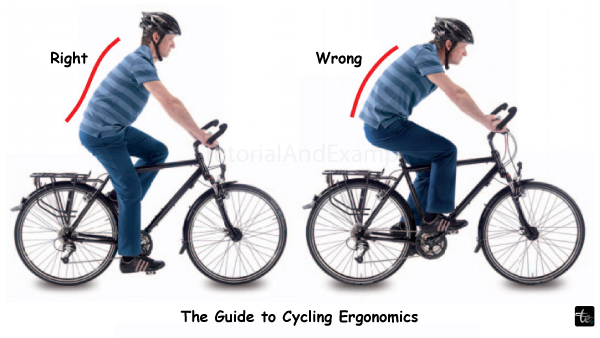
1. Equipment Design
The design of ergonomic equipment is crucial for optimizing athletic performance and mitigating sports-related diseases. Fit, comfort, and safety should be the major design factors for athletic equipment. To guarantee the optimum fit and avoid accidents, equipment like protective gear, helmets, and running shoes should have the proper amount of cushioning, support, and adjustable features.
2. Enhancement of Performance
Ergonomics is a major factor in improving sports performance. Effective training methods, like biomechanical analysis, can increase output while lowering the chance of injury. Athletes need to know the optimal body mechanics for their particular sport and have adequate warm-up and stretching routines. Athletes can also perform better when their equipment is adapted for their sport, for example, by adopting ergonomic training aids or adjusting their shoes.
3. Injury Avoidance
Ergonomics in sports is primarily concerned with preventing injuries. Acute injuries like sprains and strains can be prevented with good body mechanics, warm-up exercises, and training approaches. Furthermore, ergonomic protective gear minimizes the probability of impact-related injuries and increases safety. Examples of this gear include padding and bracing.
4. Methods of Training
In sports, ergonomics also includes optimal training methods to improve performance while decreasing the possibility of overdoing it and getting hurt. Trainers and coaches must adopt scientifically based training programs that emphasize adequate body mechanics, progressive activity, and sufficient recovery. Training methods have to be modified to take into account each athlete's particular requirements, capabilities, and limits.
Healthcare Ergonomics
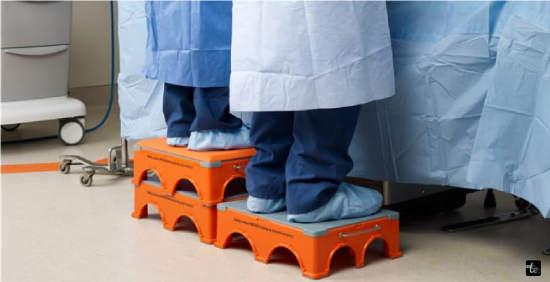
1. Patient Safety
Ergonomics is a significant component of maintaining patient safety in healthcare settings. Safe patient handling and transfer procedures should be taught to healthcare personnel in order to reduce the possibility of injury to both patients and caregivers. Adjustable beds and patient lifts are two examples of ergonomic solutions that can increase overall safety by minimizing the physical strain associated with patient handling.
2. Workplace Design
Effective office design promotes security, cooperation, and productivity in healthcare settings. ToErgonomicorkstations tailored to particular professions should include suitable storage options, height-adjustable workstations, and ergonomic chairs. To support the comfort and well-being of healthcare workers. Furthermore, appropriate lighting, sound absorption, and a well-organized workflow.
3. Environment Devices
Medical equipment design and operation must take ergonomics into account for the comfort and productivity of healthcare staff. Ergonomic handles, height adjustments, and intuitive controls are all vital components of a user-friendly medical gadget. Furthermore, ergonomic characteristics help minimize tiredness and avoid musculoskeletal illnesses. One example of this is providing healthcare staff with ergonomic seats during procedures.
4. Ergonomic Training
Healthcare personnel must obtain ergonomic training to guarantee the effective and safe provision of care. To avoid musculoskeletal injuries, training should emphasize optimal body mechanics, lifting techniques, and patient handling standards. Moreover, training in ergonomics for mobility, posture, and equipment use can improve healthcare personnel's long-term physical welfare and raise their level of awareness.
Ergonomics in Office Furnishings
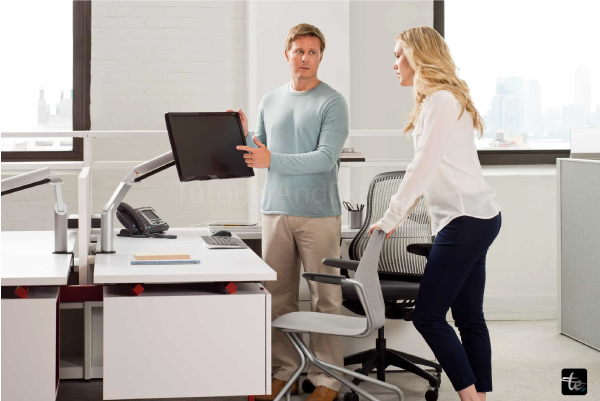
1. Office Chair
In offices, having the correct chair is vital to encourage productivity, comfort, and support. Ergonomic office chairs should be able to swivel, have armrests and lumbar support, and be height adjustable. They should also encourage neutral postures and allow for optimal weight distribution to decrease the strain and tension on the shoulders, neck, and back. Companies ought to spend money on ergonomic seats of the best standard that can be changed to fit each employee's preferences.
2. Solutions for Storage
Effective storage solutions boost workstation utilization, eliminate clutter, and promote organization. Adjustable shelves, drawers, and file cabinets are examples of ergonomically designed storage solutions that allow convenient accessibility, decrease wasteful bending and reaching, and boost productive output. To decrease physical and emotional stress, businesses should give enough storage alternatives and urge people to keep their workspaces tidy.
3. Luminance
Proper lighting is vital in offices to enhance performance, decrease eye strain, and promote general wellness. Workstations should be positioned near windows to take full advantage of natural illumination. Adjustable task lighting is also vital to avoid glare and shadows. This way, workers can modify the lighting to meet their personal preferences and the demands of their tasks.
4. Work Surface and Desk
Work surfaces and desks that are ergonomic are vital for encouraging comfort and productivity. To suit diverse user heights and encourage proper posture, desks should have enough legroom and height adjustability. Incorporating sit-stand workstations also decreases the threat of protracted sitting and musculoskeletal strain by allowing users to shift between sitting and standing positions.
Conclusion
In conclusion, ergonomics is a fundamental subject that relates the design of systems, settings, and goods with human capabilities. It enhances wellbeing, comfort, and productivity in a multitude of ways, including organizational, cognitive, and physical. Individuals and organizations can build more productive workplaces that encourage healthier, more harmonious connections with the world around us by embracing and putting ergonomic concepts into effect.